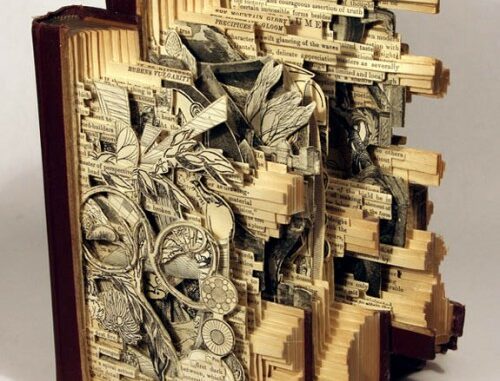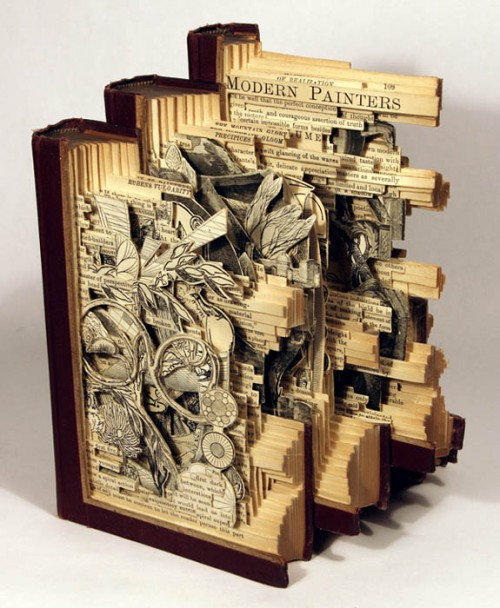
There is much prevailing wisdom that tells us people fall into distinct categories with regards to their ways of thinking; you are either verbal, visual, aural or numerical (or that’s the gist anyway – there’s one to do with touch as well). It’s undoubtedly true that as humans we each find different mediums easier to grasp. Our ability to remember is a great example of this – many of us can remember anything if you put it in a song but struggle to take words off a page or to remember numbers. Nevertheless, years ago it was the norm for children to learn large swathes of text by heart so these things must be, to at least some degree, a question of habit. I am a verbal person – words stick with me and evoke strongly to me. I can remember exact conversations years after they have happened, and there are plenty of words in my vocabulary that I can’t for the life of me ever recall having heard used in conversation. It is perhaps no surprise that I have become a writer, but to be defined solely as a words person is certainly reductive, as recent weeks have demonstrated vividly.
Before completing my first novel at the end of 2011, my primary medium was the stage; I have worked as a director, playwright and workshop leader. Words have always been important to the way I understand performance, but I have am also a strongly visual and aural person. Design featured heavily in almost all the productions I have done, and music has been an integral part of my work – whether live, manifest in detailed sound design, or linked intrinsically in some other part of my mind to the feel of the play. When I am working on any story – as prose or for stage – I find that there is a strong overall imaginative aesthetic for that story, sometimes very literal but more often not. By this I mean that there are images, songs, perhaps even poems or films, that evoke an atmosphere and a feeling in common with the piece I am working on. It is useful to me, especially if I find myself stuck, to create playlists or image boards.
Over the last month a reversal of that process has been taking shape; my novel has begun to take a visual form, in terms of both the cover design and the internal design of the book.
Of course this happens to a degree with a play; you start off with the script and then put the design to it, select actors, costumes, publicity images, lighting, sound etc. However, a play is not a script – it is a live production on stage in front of a audience. It is inherently unstable, full of minute variation. The performance you see is created around, and simultaneous to, all those other elements. Even a film or television programme, which cannot usually be altered, is created as a whole often differing from it’s initial screenplay in many ways. Flim, TV, Stage – these formats are all conglomerates of many different practices and mediums.
A novel is not. A novel is crafted entirely out of words set onto the page. The scene is set by words, the characters drawn by words, and the story is told by words. There are no telling glances, no revealing props, no emotive soundscapes (the cutting edge of digital publishing aside, more on that later). The novel is completely finished and set before an iota of design happens. Or at least this has been my experience. And yet – the cover and the pages will be an integral part of the reading experience, and they are also an important marketing tool. The balancing of these two roles is in itself a great challenge for a designer. There are minutiae beyond number that create the experience we all know and love as reading – and then there’s the challenge of transposing those to digital formats. On top of all this is the challenge of my own thinking. There are the images I had in the back of my mind for three years which represent the story to me, and all that it stands for. Letting go of them, or at least making space for the new image which will now define the book, at least for the near future, is an unexpected and unsettling experience.
I must clarify here – I have had a hand in image selection for the cover, and I am very happy with the results. The inside looks great too, it’s very eery to see your text grow up and become a book almost overnight. But there is just the slightest feeling that this is not a book written by me, is not a part of me, that it belongs to somebody else. Which I suppose, in a way, it does, because soon (I hope) readers will own these books and digital editions and prize them. It is like all rights of passage – both joyful and fearful in equal measure.
Do comment below and let me know your thoughts on the connections between our ways of envisaging, learning and understanding. Digital publishing opens up possibilities for changing the relationship between fiction and design, and we are already seeing ebooks with specially made soundtracks. Will this improve the reading experience or reduce it? I suppose it’s all a matter of taste.
Part two of my series following the ups and downs of life as a debut novelist with a small independent publisher. Keep an eye out for my next ‘diary’ post coming soon.


The novel is, arguably, the only art form with which you can create a conscious world within which a person can immerse themselves, almost completely. I think that’s because as you read you are involuntarily recreating the story, using your own experiences and sub conscious inner life to do so. Therefore, the strength of any novel from chic-lit to Tolstoy, is in its ability to capture your attention in as focused and ‘total’ a way as possible. And, anything that distracts from that, such as a sound track or other digital effects, risk undoing the novels greatest asset.